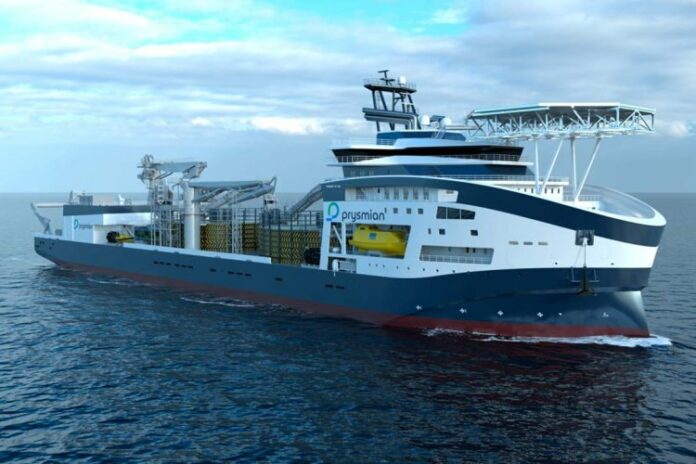VARD has secured a new contract for the design and construction of another Cable Laying Vessel for Prysmian Group in Italy.
The third vessel is an evolution, based on knowledge and experience from the two previous vessels Prysmian has contracted with VARD. One – named Monna Lisa – is still under construction and the first vessel, Leonardo da Vinci, was delivered from VARD to Prysmian in 2021. Prysmian is securing yet another contract because of the fruitful relationship based on the quality and performance of the existing ship.
Hakan Ozmen, EVP Project BU, Prysmian Group, commented:
“As global leader in submarine cable business we are fully committed to support the development of greener and smarter power grids, enabling the energy transition. We are delighted to work once again with VARD and Fincantieri – leaders in the design and construction of state-of-the-art vessels for the offshore market – to strengthen even more our installation capabilities”
The new vessel is of VARD 9 18 design and especially designed for advanced subsea operations. With a length of approximately 185 m and a breadth of about 34 m, this brand-new designed vessel will be equipped with advanced cable installation solutions, such as three carousels for a total capacity of 19. 000 tonnes, positioning itself among the highest cable loading capacity vessels in the market and enabling a reduced transportation time from the factory to the site, for an overall improved project efficiency.
A bollard pull in excess of 180 tonnes will allow the vessel to perform complex installation operations of simultaneous cable lay and burial (up to 4 cables) with a variety of ploughs, for an unrivalled optimization of offshore operations. The vessel will be equipped with state-of-the-art DP3 positioning and seakeeping systems and will be operational by beginning of 2027.



